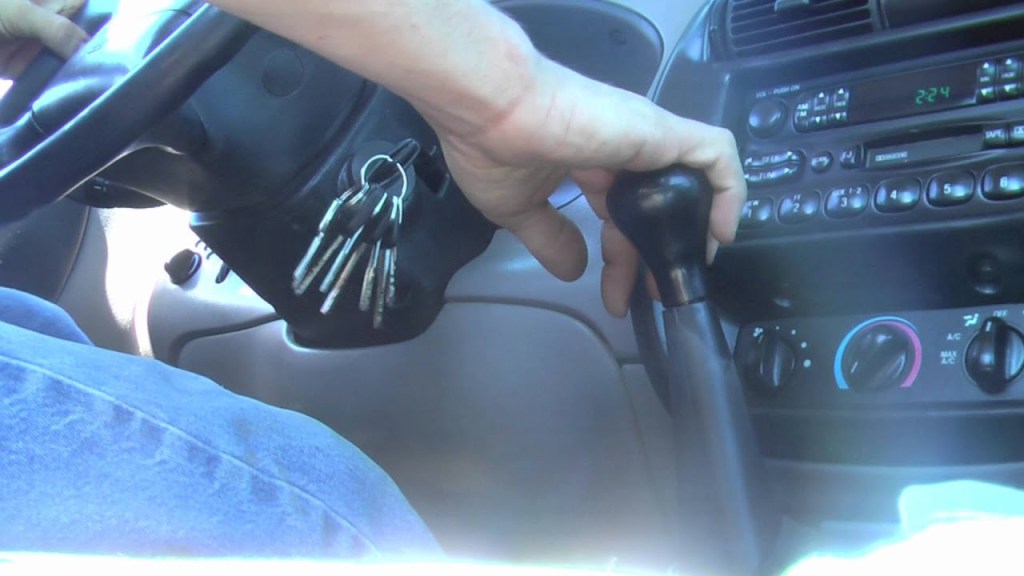Mastering The Art Of Smoothly Driving A Manual Ford Ranger: Simple Tips And Tricks To Take Control
How to Smoothly Drive Manual Ford Ranger
Introduction
Driving a manual Ford Ranger can be a challenging task for some people, especially for those who are used to driving automatic cars. However, with the right techniques and practice, driving a manual Ford Ranger can be a smooth and enjoyable experience. In this article, we will provide you with a comprehensive guide on how to smoothly drive a manual Ford Ranger. We will cover the basics of driving a manual car, as well as some advanced techniques that will help you become a pro at driving a manual Ford Ranger.
What, Who, When, Where, Why, and How
What: This article is a guide on how to smoothly drive a manual Ford Ranger.
2 Picture Gallery: Mastering The Art Of Smoothly Driving A Manual Ford Ranger: Simple Tips And Tricks To Take Control


Who: This article is aimed at anyone who wants to learn how to drive a manual Ford Ranger, including beginners and experienced drivers.

Image Source: ytimg.com
When: You can learn how to drive a manual Ford Ranger at any time, as long as you have access to a vehicle and a safe place to practice.
Where: You can learn how to drive a manual Ford Ranger anywhere, as long as you have access to a vehicle and a safe place to practice.
Why: Driving a manual Ford Ranger provides a better driving experience, as it allows you to have more control over the vehicle’s speed and acceleration.

Image Source: ytimg.com
How: We will provide you with step-by-step instructions on how to smoothly drive a manual Ford Ranger, including techniques for starting, shifting gears, and stopping.
Key Features
The Ford Ranger is a versatile vehicle that comes with a range of features to make driving easier and more comfortable. Some of the key features of the Ford Ranger that will help you drive smoothly include:
Power-assisted steering: This feature makes it easier to steer the vehicle, especially at low speeds.
Electronic Stability Control: This feature helps to keep the vehicle stable during cornering and in slippery conditions.
Anti-lock Braking System: This feature prevents the wheels from locking up during hard braking, which can cause the vehicle to skid.
Hill Start Assist: This feature makes it easier to start the vehicle on a hill, by holding the brakes for a few seconds to prevent the vehicle from rolling back.
Controls and Functionalities
The Ford Ranger’s controls and functionalities are designed to make driving easier and more intuitive. Some of the key controls and functionalities that you will need to be familiar with when driving a manual Ford Ranger include:
Clutch pedal: The clutch pedal is used to disengage the engine from the transmission, which allows you to change gears.
Brake pedal: The brake pedal is used to slow down or stop the vehicle.
Accelerator pedal: The accelerator pedal is used to increase the vehicle’s speed.
Gear stick: The gear stick is used to change gears.
Handbrake: The handbrake is used to keep the vehicle stationary when parked or stopped.
Dashboard: The dashboard displays important information about the vehicle, such as speed, fuel level, and engine temperature.
Fluid Capacities
The Ford Ranger requires several types of fluids to operate, including engine oil, transmission fluid, brake fluid, and coolant. It is important to maintain the proper fluid levels to ensure optimal performance and longevity. The following are the recommended fluid capacities for the Ford Ranger:
Engine oil: 6.0 quarts (5.7 liters)
Transmission fluid: 3.5 quarts (3.3 liters)
Brake fluid: 0.5 quarts (0.47 liters)
Coolant: 10.6 quarts (10.0 liters)
User-Friendly Features
The Ford Ranger comes with several user-friendly features that make driving easier and more convenient. Some of these features include:
Remote keyless entry: This feature allows you to lock and unlock the doors remotely using a key fob.
Automatic headlights: This feature turns the headlights on and off automatically, based on the ambient light level.
Backup camera: This feature provides a live view of the area behind the vehicle, to help you park and reverse safely.
Power windows and mirrors: This feature allows you to adjust the windows and mirrors using powered controls, instead of manually.
Tire Maintenance
Proper tire maintenance is essential for safe and efficient driving. The following are some tips for maintaining your Ford Ranger’s tires:
Check the tire pressure regularly, and inflate the tires to the recommended pressure.
Rotate the tires every 5,000 to 7,000 miles (8,000 to 11,000 km) to ensure even wear.
Replace the tires when the tread depth is less than 2/32 inch (1.6 mm).
Check the alignment and balance of the tires regularly, and have them corrected if necessary.
Interior
The Ford Ranger’s interior is designed to provide comfort and convenience for the driver and passengers. Some of the key features of the interior include:
Bucket seats: The front seats are designed to provide maximum comfort and support.
Entertainment system: The entertainment system includes a touchscreen display, Bluetooth connectivity, and a sound system.
Climate control: The climate control system allows you to adjust the temperature and airflow inside the vehicle.
Storage compartments: The Ford Ranger comes with several storage compartments to keep your belongings organized.
Exterior
The Ford Ranger’s exterior is designed to be stylish and functional. Some of the key features of the exterior include:
Aluminum wheels: The aluminum wheels are lightweight and durable.
Bedliner: The bedliner protects the truck bed from scratches and dents.
Tow hitch: The tow hitch allows you to tow a trailer or other equipment.
LED lighting: The LED lighting provides better visibility and safety.
Towing Capacities
The Ford Ranger is capable of towing heavy loads, thanks to its powerful engine and sturdy frame. The following are the towing capacities for the Ford Ranger:
2.3L EcoBoost engine: 7,500 lbs (3,402 kg)
2.3L EcoBoost engine with tow package: 7,500 lbs (3,402 kg)
Additional Resources
If you need more information on how to drive a manual Ford Ranger, there are several resources available to you, including:
The Ford Ranger owner’s manual: This manual provides detailed information on how to operate and maintain your vehicle.
Online forums: There are several online forums dedicated to Ford Ranger owners, where you can find tips, advice, and support from other owners.
Youtube videos: There are several Youtube videos that provide step-by-step instructions on how to drive a manual Ford Ranger.
Specifications
The Ford Ranger comes with several specifications that make it a versatile and powerful vehicle. Some of the key specifications of the Ford Ranger include:
Engine: 2.3L EcoBoost 4-cylinder engine
Horsepower: 270 hp
Torque: 310 lb-ft
Transmission: 6-speed manual transmission
Fuel economy: 21 mpg city / 26 mpg highway
Cargo bed length: 6 feet
Accessories
The Ford Ranger comes with a range of accessories that allow you to customize and personalize your vehicle. Some of the popular accessories for the Ford Ranger include:
Tonneau cover: This cover protects the truck bed from the elements and theft.
Running boards: These boards provide easier access to the cabin and bed of the truck.
Roof rack: This rack allows you to carry additional cargo on the roof of the vehicle.
Off-road tires: These tires provide better traction and durability for off-road driving.
Troubleshooting Guides
If you experience any issues with your Ford Ranger, there are several troubleshooting guides available to help you diagnose and fix the problem. Some of the common issues that you may encounter include:
Difficulty shifting gears
Clutch slippage
Engine overheating
This post topic: Manual


